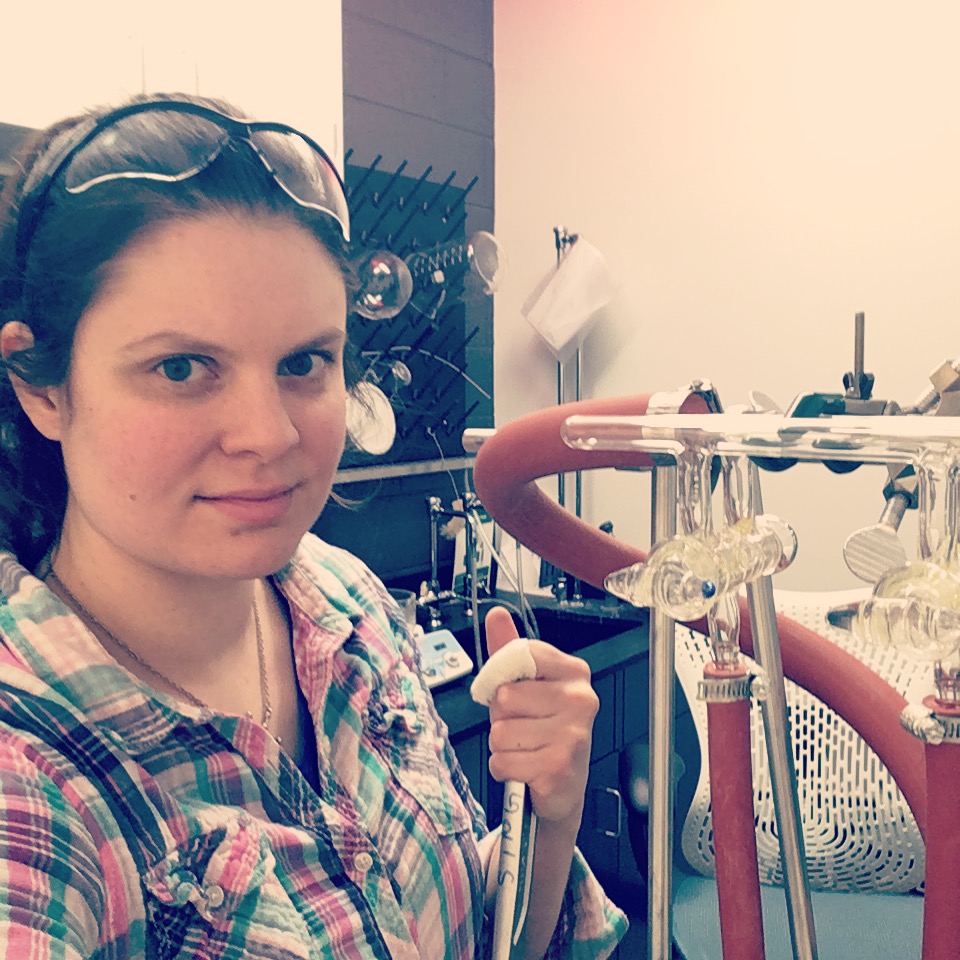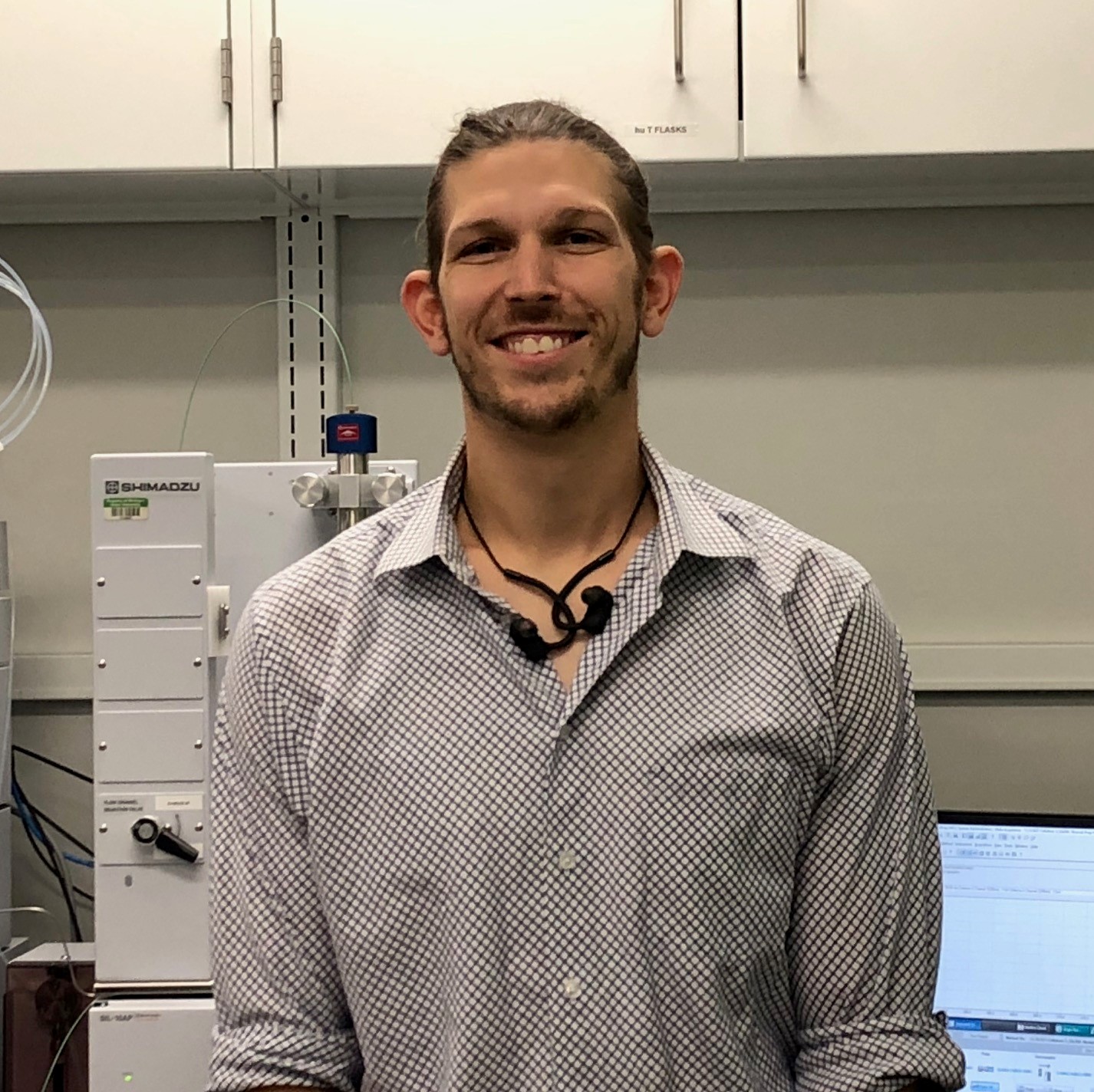Past Associates

Maris Cinelli, B.S. (Physiology, Northern Michigan University, 2006), Ph.D. (Medicinal Chemistry, Purdue University, 2011), post-doctoral (Northwestern University, R. B. Silverman, 2012-2017). My research involves the synthesis of fatty acid metabolites and their unnatural analogues. I am interested in using fatty acid metabolites and analogues as drug leads for the treatment of numerous pathologies, including fibrosis and excessive blood clotting.

Devon Dattmore, Graduate Student, Pharmacology and Toxicology, Biomedical Toxicology: The Lee Lab investigates the physiological effects of omega polyunsaturated fatty acids (PUFA’s). Mammals cannot synthesize PUFA’s and so must obtain them from dietary sources. Because of this, understanding optimal levels of dietary intake is quite important. Until now, the scientific literature has at times offered conflicting results of the benefits and/or hazards of supplementation. There are a few important factors likely contributing to these disparities, being that: 1) most all PUFA supplements are not regulated by the FDA, and so there may be stark differences in purities of supplements from different producers, 2) the amount and duration of supplementation likely plays an important role in efficacy (manifestation of maximum effect may take years), 3) genetic differences contribute to variations in efficacy between individuals and populations. Furthermore, PUFA’s are metabolized to a variety of lipid mediators, which possess their own unique biological effects. Elevations in some of these metabolites have demonstrable beneficial effects, whereas increases in others seem to be harmful. It’s important to consider how different balances of these PUFA’s, as well as their metabolites, might influence health and disease under different conditions.
There is an abundance of evidence from animal studies that further aligns with genome-wide analysis studies in humans, suggesting that at least one of these metabolites (an omega-6 epoxy-PUFA) may improve insulin sensitivity in type 2 diabetics, as well as offer protection from many of the complications of the disease such as hypertension, kidney disease, beta-islet cell death, neuropathy, retinopathy, and cardiovascular events. This epoxy-PUFA exerts physiological effects extracellularly through signaling cascades, suggesting that it acts through a receptor, which has yet to be determined. Aside from this, transgenic mice that can convert omega-6 PUFA’s to omega-3 PUFA’s are protected from developing insulin resistance. This suggests a beneficial effect by: 1) increasing total omega-3 PUFA’s, 2) an increase in a single omega-3 PUFA’s, and/or 3) a decrease in omega-6 to omega-3 ratio.
Thus, my project has two primary aims: 1) discovery of epoxy-PUFA receptors, 2) elucidating the differential effects of individual and combinations of PUFA’s and epoxy-PUFA’s on insulin resistance. Together, these investigations may reveal lucrative drug targets, as well as improve dietary recommendations for type 2 diabetics.
2020 NEWS! Devon Dattmore, 4-20-2020, received a predoctoral fellow to the NIEHS Training Grant in Environmental Toxicology

Fan Zhang, Ph.D. in Pharmaceutical Chemistry, Postdoctoral Associate. My research involves the utilization of chemical probes to investigate the molecular actions of dietary lipids (with a focus on omega-3 and omega-6 polyunsaturated fatty acids (PUFAs)) on the gut microbiome. DHA and EPA with carbon isotope will be biosynthesized by marine organisms. These interactions between microbes and dietary fat likely have significant effects on human health, which are currently unknown.
Quantitative proï¬ling method is used to assess an array of oxylipins and their metabolites in diabetes patients by LC/MS/MS (SPE-UPLC-ESI MS/MS). This might lead to the elucidation the functional roles that these oxylipins contribute in physiological processes. In the future, this efficient oxylipin analysis technology will be applied to assess characteristic differences in those suffering from metabolic diseases.
Fan Zhang's research works | Peking Union Medical College Hospital, Beijing (PUMCH) and other places
Fan Zhang's 6 research works with 32 citations and 171 reads, including: Neuroprotective phenylethanoid glycosides with dioxane units from the fruits of Forsythia suspensa

Derek Vonarx, I received my B.S. degree in Chemistry from Wichita State University in 2019. I am a first-year graduate student working towards my PhD. My research is focused on studying the role of CYP 450 metabolism of unsaturated fatty acids (UFAs) and endocannabinoids (ECs) on neural aging. It has been demonstrated that the epoxy-UFAs and epoxy-ECs, generated by CYP 450 monooxygenase, are anti-inflammatory, anti-hypertensive, analgesic, tissue and neural protectives. We are interested in how aging will affect these pathways.
We will synthesize specific UFAs and ECs and test them on a c. elegan model. This is an effective model for a few reasons. They are inexpensive and have transparent bodies. The latter property allows us to observe the neurons visually. Therefore, we can score them to measure the neurological state of the worms to see how aging changes their health. Lastly, the worms have similar metabolic pathways for UFAs and ECs to humans. The practical nature of the c. elegans will allow us to gain insight on which UFAs, ECs, or metabolite is directly involved in the neural changes. Those compounds with profound changes can then be used in large scale mammalian studies to assess its pharmaceutical use.
Keshav Prahalad, Graduate Student: Organic Chemistry. I received my B.S. in Chemistry from Purdue University.
Currently, I am a second year graduate student who is working towards a PhD. The main
focus of my research involves designing new soluble epoxide hydrolase inhibitors (sEHIs)
to treat Systemic Lupus Erythematosus (SLE). SLE is an autoimmune disease that affects
nearly 1.5 million patients in the U.S., and it is a disease that has been known to
affect multiple organs. These organs include the lungs, kidneys, and central nervous
system (CNS). People with SLE will typically experience a lower quality of life, and
more than 51% of patients quit work within the first 15 years of diagnosis. Current
treatments for this disease include corticosteroids like prednisone, but these treatments
are attached to unwelcome side effects like osteoporosis. Therefore, there is a medical
need to synthesize new drugs to treat SLE. Soluble epoxide hydrolase (sEH) is an enzyme
known for hydrolyzing epoxy fatty acids into 1,2 diols. Epoxy fatty acids are considered
to be important signaling molecules for regulating pain, inflammation, and blood pressure.
Inhibiting sEH may have anti-inflammatory effects to
manage the symptoms of SLE.
A popular sEH inhibitor used in academia is TUCB because of its potency across many different species. However, TUCB and similar sEH inhibitors have poor drug-like properties, limited bioavailability, and little CNS penetration. Our goal is to optimize lead sEH inhibitor structures from a large library of compounds to improve drug-like properties and PK profile for high oral bioavailability and CNS penetration. After optimization, we plan to synthesize each inhibitor to test their potency and efficacy through sEH inhibition assays. Lastly, we plan to generate a PK profile for each inhibitor using mouse models.

Ben Kessler, Undergraduate Student: I am a freshman in the College of Lyman Briggs majoring in Physiology and minoring in Spanish. Under the guidance of Devon Dattmore, I am using C. elegans to study the role of polyunsaturated fatty acids (PUFAs), such as omega-3 and omega-6. C. elegans are useful model organisms because they are inexpensive to maintain, their cells and organs are easily seen through their transparent bodies, they have similar PUFA metabolic pathways to humans, and they have a short lifespan which allows phenotypic responses to the aging process to be observed. I have been conducting life assays where I see how long a single generation of C. elegans can live. After completing the control, wild type C. elegans (N2), I have begun conducting trials with different knockout strains that lack the ability to metabolize PUFAs to a certain metabolite. Further experimentation may involve: intestinal integrity testing in order to determine if omega-3 PUFAs and their metabolites are beneficial to the gut microbiota or intestinal cell walls; mobility tests to observe the physiological role PUFAs play in preventing nerve damage; and free radical testing to study how PUFAs may reduce oxidative stress.
Farzaneh Behzadnia, Research Assistant (Pharmacology and toxicology, MSU, 2018-present), Pharm-D (Shiraz University of Medical Science, 2013)
I am involved in developing a high-throughput screening assay to determine the potency to inhibit organ fibrosis by lipid mediators and their analogs synthesized in the lab. With this project, we are testing several different fatty acid metabolites and soluble epoxide hydrolase inhibitors to find their effect and potency on fibrosis.
I am also investigating if inhibition of sEH alleviates diabetic neuropathic pain through modulation of ROS production by macrophages. Our hypothesis is that inhibition of sEH can reduce the ROS in macrophage cells induced by Ang II.
Harrison Plummer, Undergraduate Student: I am a junior studying biochemistry here at Michigan State University. My project in the Sing lab focuses on obstructing the function of Epoxide Hyrdrolase 2 as the enzyme breaks down epoxyeicosatrienoic acids which has vast clinical significance such as reducing blood pressure. When I am not working in the lab I work as an Emergency Medical Technician in the Lansing area and coordinate service trips with Alternative Spartan Breaks.
Sidney Lipovsky, Undergraduate Student: I am an undergraduate studying chemistry and minoring in pharmacology and toxicology at Michigan State University, and I am a member of the Honors College. I have worked in Dr. Lee’s lab since August 2018. My project consists of synthesizing and purifying epoxyeicosatrienoic acid (EETs) and eventually using them in biological studies to find the EET receptor. EETs are metabolites of arachidonic acid with numerous beneficial characteristics, including anti-inflammatory properties. They have potential in drug development and treatment of diseases such as Crohn’s, Parkinson’s, cardiovascular diseases, and various others.
Kaitlyn Lumpkins, Undergraduate Student: I am currently a senior with a major in chemistry, a minor in bioethics, and I am a member of the Honors College at Michigan State University. I work for University Outreach and Engagement as a student clerical assistant in addition to my responsibilities in Dr. Lee’s lab. My project is focused on the chemical genetics and neurological effects of omega-3 and omega-6 polyunsaturated fatty acids (PUFAs). Since humans must obtain PUFAs from dietary sources, it is vital to study the effects of omega-3 and omega-6 PUFA ratios in order to determine an ideal amount of each for consumption. Caenorhabditis elegans (C. elegans) is a model organism to test such effects since their PUFA metabolic pathways are almost identical to humans and they are genetically malleable. I have been conducting lifespan and motility assays on a variety of knockout strains of C. elegans, each of which have different abilities in metabolizing omega-3 and omega-6 PUFAs. Furthermore, I have synthesized a soluble epoxide hydrolase (sEH) inhibitor, AUDA, which I hope to test on C. elegans in the near future." Additionally, I received the Walter R. and Margaret W. Yates Memorial Summer Research Scholarship in order to conduct research with Sing last summer.
